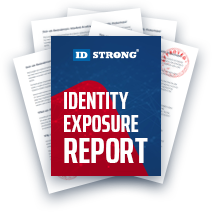How to Detect Fake Online Shopping Websites
Table of Contents
- By David Lukic
- Published: Nov 11, 2020
- Last Updated: Mar 18, 2022
Scammers are always looking for a way into your wallet. Another way hackers trick unsuspecting victims is through fake online shopping websites or faked ads to real sites that redirect the user to a spoofed website. Criminals use all the technology necessary to make fake shopping sites appear legitimate. They may steal logos, use professional designers to develop very fancy-looking websites to trick the public into buying from them. After paying for your goods, they never show up, and soon, the site is gone like it was never there.
More recently, fake stores are popping up on social media, and users are clicking, paying, and they never receive their purchase. These scams work by advertising brand name items for ridiculously low prices. They scam a few people and then shut it down quickly, so they are harder to prosecute.
How to Tell if an Online Store is Legit?
Most places you shop online are legitimate, but some are not. You must be diligent in knowing the ways you can verify that a website is real and safe to purchase from.
- Type the web address into Google and see what comes up. Google searches through reviews, alerts, and other information, so you may see right off a warning that it is not a safe site.
- Go to the Better Business Bureau’s website to check a company’s legitimacy.
- Always look for an https at the beginning of the web address; this assures you that there is a security certificate installed. Make sure the payment page has this https on there as well. Also, look for a green lock symbol. If they are using an SSL, which is out of date, it will not show in green, and you might want to stay away.
- Be careful of sites with an odd URL that contains a lot of dashes, imitates a legitimate site (Amaz0n), uses .biz or .info, or has a bunch of symbols in the name.
- Review the writing on the website. If it has a lot of poor grammar and broken English, it is probably not safe.
- Watch out for sites with overt advertising that takes up the whole page and diverts you from your purchase. It may contain malware and want you to download something for free instead.

How Do I Know That a Website is Safe to Buy From?
Many of us love to shop online, but it is not always easy to know if the site you are on is safe. Here are some tips to check it out first before pulling out your credit card and entering it into the website.
- Visit the website’s contact page and look for a privacy policy. If the site has neither, then be wary. Click the contact button and review the recipient’s email address. If it looks suspicious, pass on that website.
- Check out the owner of the website to see who actually owns it at https://whois.domaintools.com/.
- Check out the website with Google’s Transparency Report webpage: https://www.google.com/transparencyreport/safebrowsing/diagnostic/index.htm/.
- Look for obvious signs of malware (defacement, invasive pop-ups, malvertising, phishing kits, SEO spam, and browser warnings of unsafe websites).
Another big red flag is when you get to the payment page. How do they want you to pay? Although hackers sometimes use PayPal scams but usually If the site connects to PayPal and allows you to use credit cards, then it may be legitimate. If a website asks you to pay via wire transfer, prepaid gift cards, or money order, it is most likely a fake online store.

What is a .TOP Website?
In August of 2014, the ICANN’s New gTLD Program delegated a new top-level generic domain called .top. Anyone can register a domain using the .top extension. It is legitimate, but that does not mean that a website using the .top extension is legitimate. Scammers can register domains under several different extensions, including .top.
Is Smnkk com Legit?
An example of a suspicious website is smnkk.com. The site appears to be a Salomon products e-tailer. However, on further investigation, it is not. It has no security certificate (is using http and not https). There is no company information on the website, and the social media links go nowhere. They are just for show. One additional telltale sign is that the prices are way too low for that type of merchandise. A few scam agent websites have evaluated this domain and found it to be high risk, and most likely, a scam website so best to stay away!



















































































































